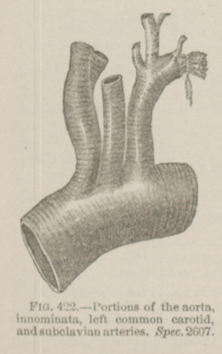Title: Peterson, S. R.
Source text: The Medical and Surgical History of the War of the Rebellion. (1861-65.), Part 3, Volume 2 (Washington, DC: Government Printing Office, 1883), 772.
Civil War Washington ID: med.d2e27848
TEI/XML: med.d2e27848.xml
CASE 1116.—Private S. R. Peterson, Co. D, 14th Infantry, aged 27 years, was wounded at Chancellorsville, May 3, 1863, and received into Second Division Hospital, Fifth Army Corps. Assistant Surgeon C. Wagner, U. S. A., noted: "Gunshot wound of arm. Amputation by B. Howard, Assistant Surgeon, U. S. A." From the field hospital the patient was, on June 14th, admitted to Douglas Hospital at Washington, and several days afterwards he was transferred to Satterlee Hospital at Philadelphia. Acting Assistant Surgeon D. Kennidy contributed the specimen (Cat. Surg. Sect., 1866, p. 458, Spec. 2607) with the following minutes of the case: "Patient was wounded by a shell in the left arm, rendering amputation near the shoulder necessary. The operation was performed upon the battlefield, about fifteen minutes after he received the wound, without the administration of anæsthetics. At the time he was transferred to this hospital he had erysipelas of left side of thorax and back. He was immediately placed on tinctura ferri chlor. gtts xx every three hours, and unguent. ferri sulph. used locally. The stump, which suppurated freely, was dressed with a poultice. He began to improve, and by June 30th the erysipelas had disappeared and he was fast gaining strength. July 5th: Had slight diarrhœa; prescribed astringents. July 6th: Not so well; very weak. Ordered beef essence and wine whey. July 8th: Bled about a pint from the stump; ice-water and compress applied. July 9th: Had another hæmorrhage early in the morning; subclavian artery ligated at its third part. Present at the operation: Drs. Hayes, Schell, Baldwin, and Roe. Prescribed brandy, one-half ounce every two hours. July 10th: Feels stronger and pulse good; ordered sulphate of quinine, grs. ii, three times a day. He continued to do well until the 16th, when he had a hæmorrhage from the artery where it had been ligated; bled about a pint; digital pressure applied. July 17th: No bleeding. Early in the morning of the 18th he lost some blood while changing the fingers. His pulse had been very weak since the 16th, and he was fast losing strength. About 10 o'clock on the morning of the 18th of July he died. The specimen consists of a wet preparation of the arch of the aorta, the innominata, left common carotid, and subclavian arteries, terminating at the point of ineffectual ligation of the left subclavian in its third portion, showing the separation of the coats with no formation of clot.
